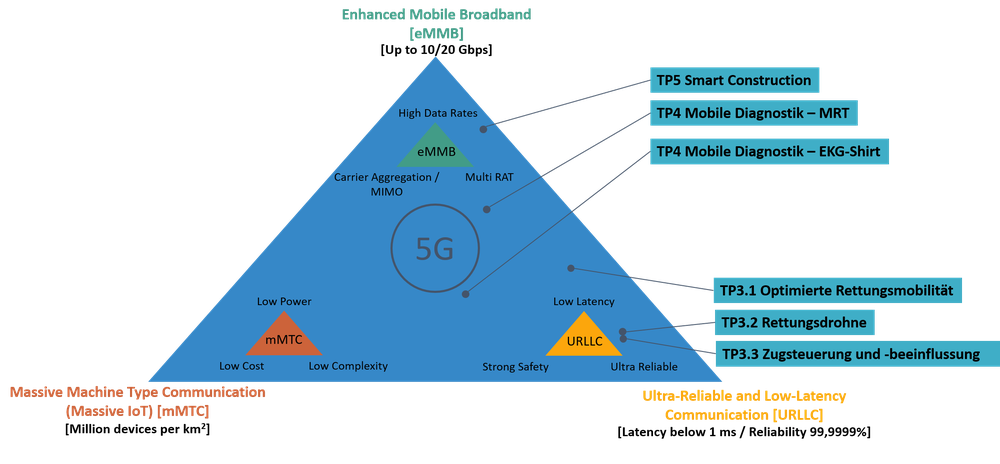Use case
The new mobile communications standard 5G is considered a key technology of the future. With its real-time capability, data transmission assurance and increased bandwidth, 5G is taking an important role in technology succession, making it one of the enabling technologies for machine learning or artificial intelligence in wireless scenarios.
The roll-out of 5G and the deployment of commercial networks is just beginning. A full roll-out as well as 5G standardization (and thus further development) are far from complete. The need for testing new transmission technologies and applications defined in the still ongoing 5G standardization process will remain for many years. In particular, safety-relevant applications in the automotive and smart city sectors require extensive testing before they are suitable for real everyday use on the road and in the city.
5G technology can be represented in three application profiles. One is eMBB (Enhanced Mobile Broadband), which supports very high data rates. URLLC (Ultra Reliable and Low Latency Communications) is suitable for highly reliable connections with low latency especially for time-critical applications. mMTC (Massive Machine Type Communications) is used in smart cities, for example, and supports a high number of networked devices while taking energy efficiency into account. In the figure shown, the use cases of the 5G-Reallabor project are classified into the categories.

